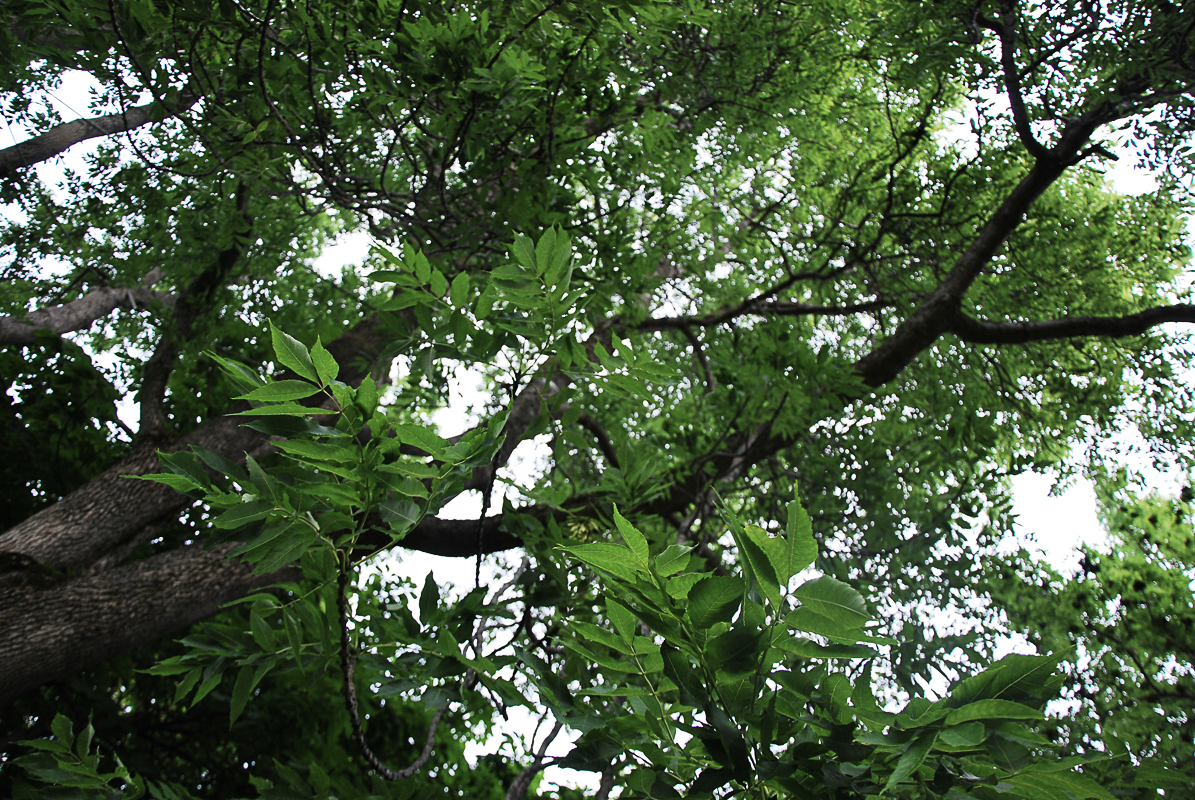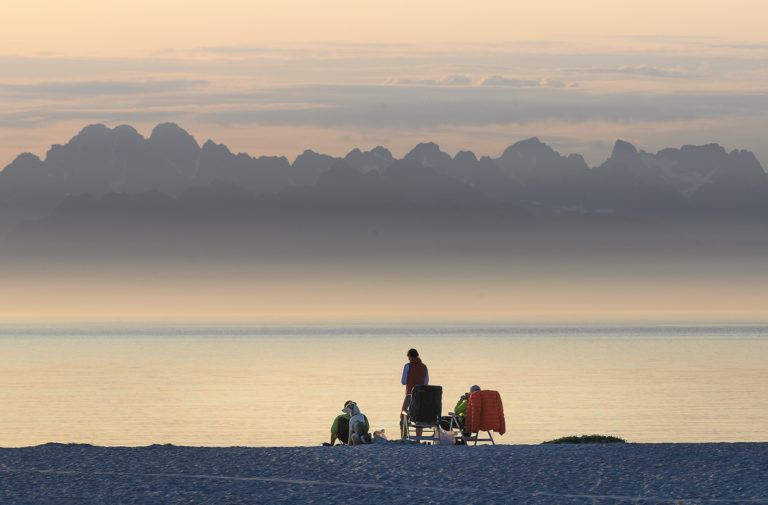Lush green fields, broad-leaved trees and well-kept farms. This island is warmed by the Gulf Stream and protected by huge mountains. You can see the Lofoten Wall from here and reach much of Northern Norway by boat. Not surprisingly, there are many ancient monuments too. A walk here is full of gentle beauty and treasures from the past.
The Sigarshaugen burial mound dominates the landscape
This huge burial mound, located adjacent to the church in the heart of the village, dominates the landscape at 3 metres (10 ft.) high and 35 metres (115 ft.) in diameter. Believed to have been built in around the 7th Century, it hasn’t been excavated, so we don’t know what is hidden beneath it. The homesteads of the lagmann, or judge for the Hålogaland region, were built above the mound from the Middle Ages until 1797.
Steigar Assembly was the meeeting place of the north
We know that the Steigar Assembly was held in Steigen in the Middle Ages, with people coming from all over Hålogaland, the Norse area of Northern Norway, for judgements, important decisions and to meet people. We don’t know when the assembly started, but it may date as far back as the Viking era.
Steigen Church has a long and varied history
It is no coincidence that the church is directly adjacent to the burial mound. This may have been a place of worship for the Vikings, where the chieftain made sacrifices on behalf of his people — and kept spiritual control of them. So for the Christians, it was important for the church to be built in exactly the same place. The eastern part of the church built in the 13th Century forms today’s choir. The nave is from 1869.
Vollmoa is an Iron Age site of historical importance
On a pretty green plain near Steigberget is an unusual relic from Iron Age times. In 5–600 AD, there was a ring-shaped settlement of 16 turf huts on this site, excavated in the 1940s and now known as Vollmoa. Around the site are bowl-shaped cooking pits, where vast quantities of food were prepared and slowly spit-roasted. However, no other evidence of farming or female occupations has been found here, so it was a place for men only.
Engeløya was a centre for economic and military power
The site could house several hundred people, but we don’t know exactly what its purpose was. It could have been a training camp or barracks, used by the Steigar chieftain’s warriors at certain times of the year, at a safe distance from the sea. All we know is that no one lived here permanently. However, the dimensions of the site indicate a concentration of economic and military power in Steigen, based on trade and communication between Norse chieftains and the Sami.
Hagbard and Signe are Steigens Romeo and Juliet
The tragic love story of Hagbard and Signe is part of Steigen’s cultural landscape. Signe was the daughter of King Sigar of Steig. He had promised her to a Russian king, but she loved Hagbard, son of a Lofoten chieftain. He managed to meet Signe in secret, and they planned to flee to Lofoten, vowing to die together. But Signe’s slave girl raised the alarm, and Hagbard was sentenced to death. From his place of execution on the islet of Hagbardholmen, Hagbard saw smoke rising from Signe’s house; she had set it alight, and died with him. The saga of Hagbart and Signe is enacted every other year in the play Hagbard and Signe. Sigarshaugen, Hagbardholmen and the Signelillsteinen stone are all linked to the saga.
Steigen Lilies and other warm climate flora can be found at the vicarage
These days, the Steigen vicarage garden resembles a beautiful park, with trees such as oak, ash, horse chestnut, linden, maple and copper beech, normally found in warmer climates. But in the 1870s, it was a fertile garden with 600 different shrubs. The dean, Johan Karl Richard Wisløff, was a pioneer in Scandinavian gardening, and worked with the Botanical Garden in Christiania to find plants suitable for Northern Norwegian gardens. But the trees eventually grew too big, and the garden too hard to look after, so it fell into decay. An ornamental garden has, however, recently been created in the Steigen Rural Museum, containing many of the old favourites introduced by Wisløff. The most famous is the Caucasian lily (Lilium monadelphum), known as the Steigen lily in Northern Norway. There is also a nut grove above the vicarage garden, containing the world’s northernmost wild hazelnuts.
There is more than you think in Steigen
On Hagbardholmen, where, according to legend, Hagbard was executed, there are several burial mounds. Below Steinberget, in the west of the village, are the remains of boathouses with room for Viking ships as big as the Oseberg ship. The doctor’s residence has become the Steigen Rural Museum, with old houses from the area and beds of Steigen lilies. Home-made Møsbrøm flatbread, with a sweet brown-cheese sauce, sour cream and plenty of butter is a taste sensation not to be missed. It just might give you the energy to walk over Bøskaret to the next village, Bø.
You can Visit Engeløya by car
Motorists drive through the 8-km (5-mile) Steigen Tunnel from the E6, following the signs to Engeløya. Once in the village, though, you’re on foot, with marked trails that criss-cross the cultural landscape. Anything of interest is marked with a plaque. Steigen Rural Museum has regular guided tours and is also the best place from which to discover the paths around the village.
Practical information about Steigen
Steigen is found in Nord-Salten, between Bodø and Narvik. You can drive through the 8km long Steigen tunnel from the E6. There is also a bus and you can catch the catamaran.
There is a marked path through the area allowing easy identification of sites. Steigen folk museum and the Vicarage garden lie on the main road.
Visit Bodø informs about Steigen and the neighbouring municipalities north of Bodø.











